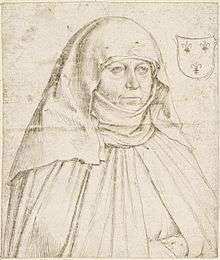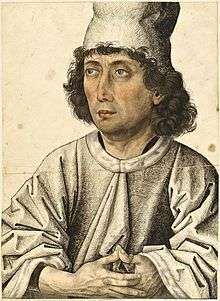Kleiner Klebeband


The so-called Kleiner Klebeband ("little glued binder") is a collection of over 120 drawings from the 15th and 16th century, which were combined into a leathern binder in the 19th century. It considered as one of the most important reference collections of German art drawings from that period.[1][2]
Maximilian Willibald of Waldburg-Wolfegg (1604–1667) started to collect the drawings of the Kleiner Klebeband from 1650 until his death. They were part of a much larger art collection, the Wolfegg cabinet, that he founded. Originally they were loose sheets, but in the 19th century they were assembled into a leathern binder. In fall 2011 the Stiftung Preußischer Kulturbesitz und museums of the city of Augsburg bought them from the family Waldburg-Wolfegg and in December of the same year they were shown to the public for the first time in a special exhibition.[1][2]
The Kleiner Klebeband is not only containing drawings by German artists but it contains a few works of Dutch and Italian masters as well. Among its best known drawings are a number of works by Hans Holbein the Elder and his workshop and a portrait of young man from 1475 attributed to the Master of the Mornauer Portrait. The latter was described by the artist and academic Peter Halm as the "most perfect German drawing before Dürer".[3]
References and further reading
- Christoph Trepesch: Augsburger Altmeister. Arsprototo, issue 4/2011 (German)
- Michael Roth: Ein Bild von einem Mann. Arsprototo, issue 4/2011 (German)
- Lisa Zeitz: Großer Kleiner Klebeband. Arsprototo, issue 4/2011 (German)
Notes
- 1 2 Anette Liebmann: Kleiner Klebeband, große Sensation. Aichacher Zeitung, 2011-12-15 (German)
- 1 2 Lisa Zeitz: Großer Kleiner Klebeband. Arsprototo, Ausgabe 4/2011 (German)
- ↑ Meisterhafte Zeichnungen. Press release of the Staatliche Museen zu Berlin on the acquisition of the Kleiner Klebenand, 2011-10-7 (German)
| Wikimedia Commons has media related to Kleiner Klebeband (Maximilian Willibald von Waldburg-Wolfegg). |